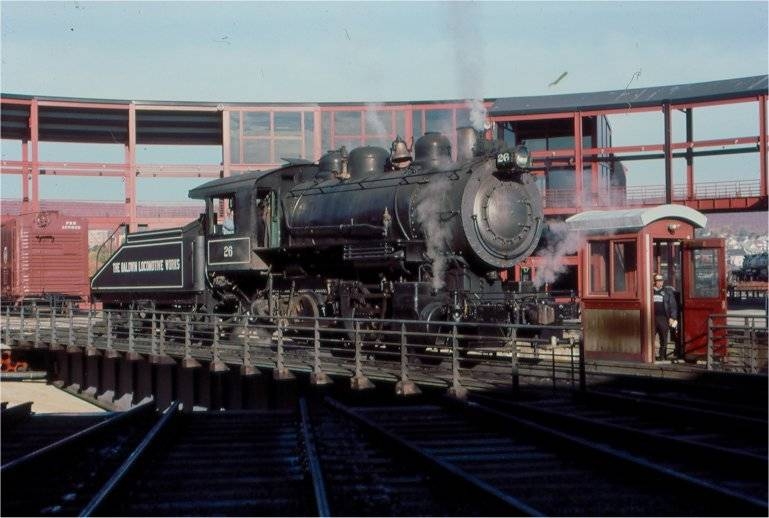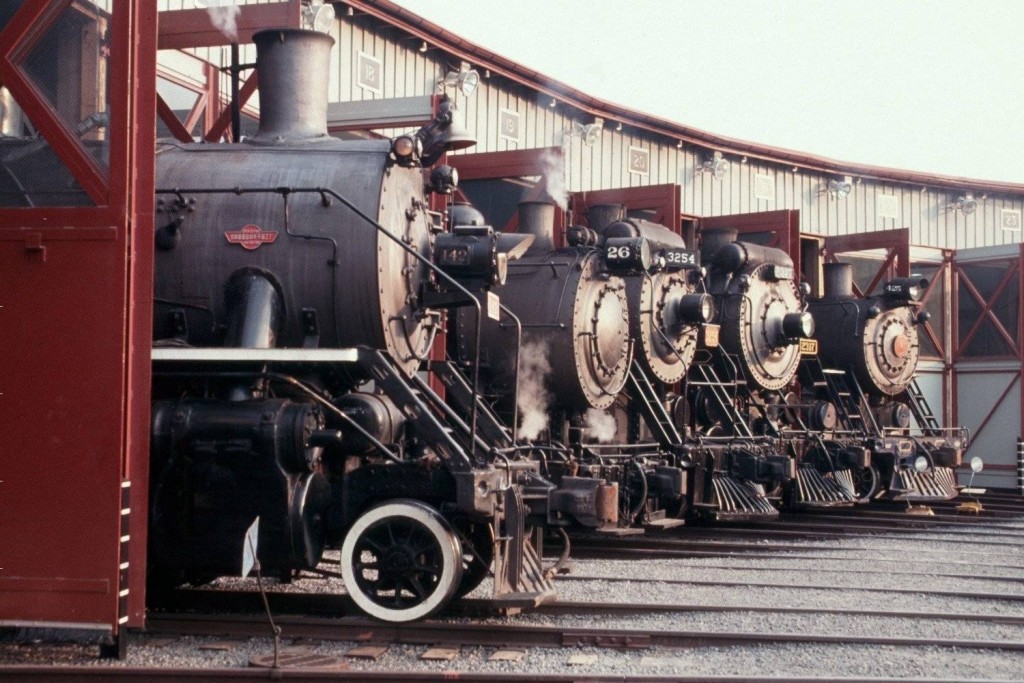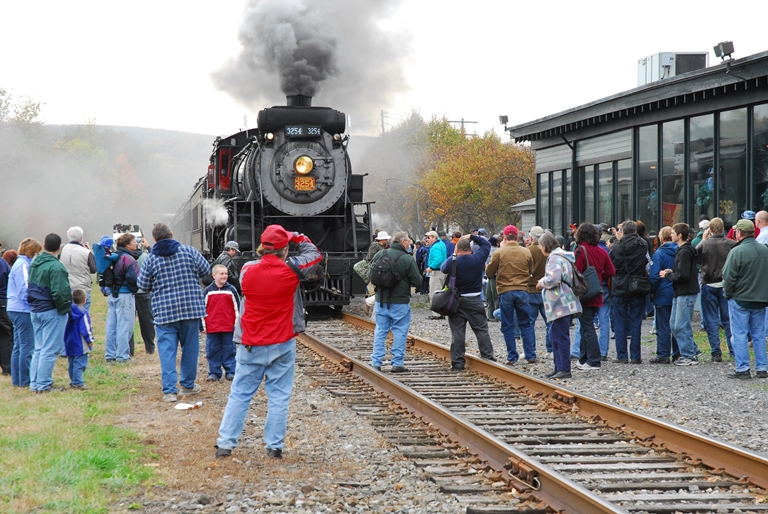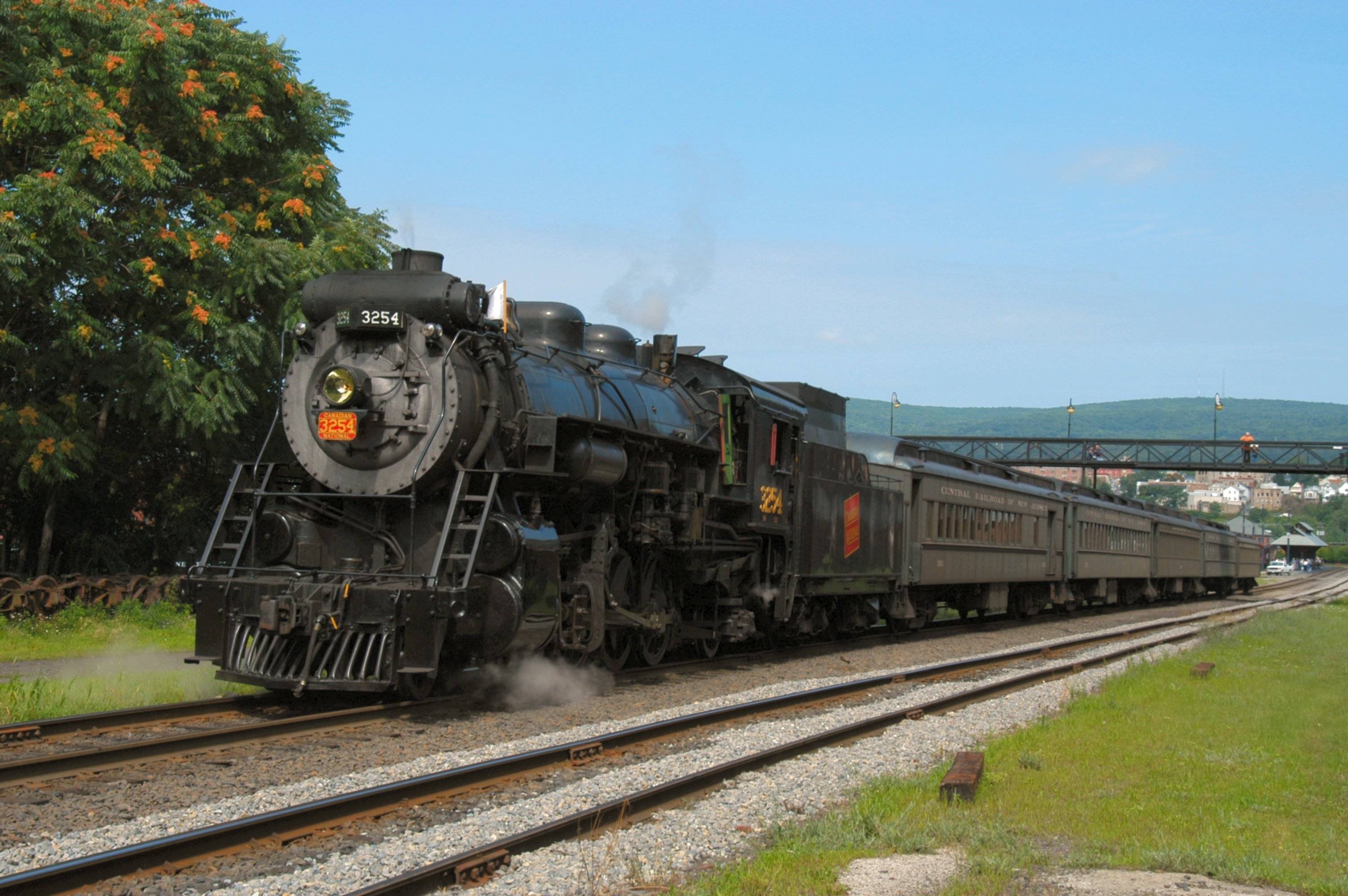The National Park Service will marks its 100th anniversary in 2016, and in honor of this centennial celebration, PHMC will highlight the National Parks in Pennsylvania throughout the coming year, as seen through the eyes of our staff.
Recently, a couple of us from the office went on a trip to the Steamtown National Historic Site in Scranton. The site is owned by the National Park Service and is the site a rail yard and engine roundhouse of the former Delaware, Lackawanna, and Western Railroad. We went to discuss consultation between our office and NPS on maintenance and infrastructure improvements at the site. Once we were done with our official discussions, we got a tour of the facilities.

Baldwin 26 on the Turntable. The turntable served two important functions for steam locomotives. Since steam locomotives are built to go one direction (they can go in reverse, just not as fast) railroads needed a way to turn them around using as little space as possible. Also, the turntable provided access to the repair stalls in the Roundhouse. NPS Photo.
First off, we got to see the site archive. The collection includes a large number of railroad records, daily log books, and railroad artifacts. They also have a collection of thousands of glass plate negatives from the steam era of railroading. It is an incredible amount of information about the daily running of a railroad.
Then we got to the part that I was looking forward to, the engine shop and the roundhouse. In the engine repair shop is a small 3 axle switching engine (which is a wheel pattern of 0-6-0) most of the way to being restored. By comparison to a mainline steam engine, this would have been a small machine, but when you stand next to its 50 inch driving wheels you realize just how big a “small” steam engine really is. From the repair shop, we moved on to the engine collection in the roundhouse. We were in the area normally off limits to regular visitors and so we were able to see the engines at ground level. (Regular visitors to the site see the engines from a raised walkway.) Again, it is amazing how big these machines are.

Steamtown hosted visiting steam locomotives during the Grand Opening in 1995. Five steam locomotives were posed in the Roundhouse for this photo. Historically, steam locomotives faced the other way in the Roundhouse to allow more room between the locomotives at the end where the work was done.
The collection includes a wonderful variety of mainline freight and passenger engines including a Berkshire (2-8-4), a Mountain (4-8-2), a Pacific (4-6-2), and a couple of Mikados (2-8-2) among others. Most of these engines are museum pieces that either are beyond repair or are too big to restore and practically keep working under steam. Outside in the yard area is a suburban tank engine once used by the Canadian National Railroad in and around Toronto and its suburbs. This engine (4-6-4T) is very similar to suburban tank engines of the same wheel pattern once used by the Central of New Jersey Railroad. The reason I bring up this engine is that it is a favorite type of mine and one that I plan to model in HO scale for my model train layout. I have most of the parts, I just need to make a few design drawings and find the time to build it.

Canadian National #3254 steam locomotive, with a group of railfans, pulls to a stop at East Stroudsburg, PA during a Lackawanna Railfest 2007 passenger excursion. NPS Photo.
Outside of the engine house but and next to the turn table, there is a Consolidation type locomotive (2-8-0) that we were told was a possibility for restoration in the next few years. This was a very common type of steam locomotive in the early decades of the 20th century. Developed at first as mainline freight engines, these locomotives would have been displaced and demoted to more humble duties in rail yards, short-lines, daily freights and, in some cases, local passenger service as larger, more modern engines were developed. With such a history, these engines ended up being some of the work-horses of the steam rail era. This is the sort of engine for which I have an affinity and is the sort of engine I like to model. I very much look forward to seeing it in working order in a few years.
Comment Policy
PHMC welcomes and encourages topic-related comments on this blog. PHMC reserves the right to remove comments that in PHMC’s discretion do not follow participation guidelines.
Commenters and Comments shall be related to the blog post topic and respectful of others who use this site.
Commenters and Comments shall not: use language that is offensive, inflammatory or provocative (this includes, but is not limited to, using profanity, obscene, or vulgar comments); disparage other commenters or people; condone illegal activity; identify the location of known or suspected archeological sites; post personal information in comments such as addresses, phone numbers, e-mail addresses or other contact details, which may relate to you or other individuals; impersonate or falsely claim to represent a person or an organization; make any commercial endorsement or promotion of any product, service or publication.
If you would like to comment on other topics not related to this blog post but related to PHMC, please fill out the PHMC Contact Us Form.

Leave a Reply